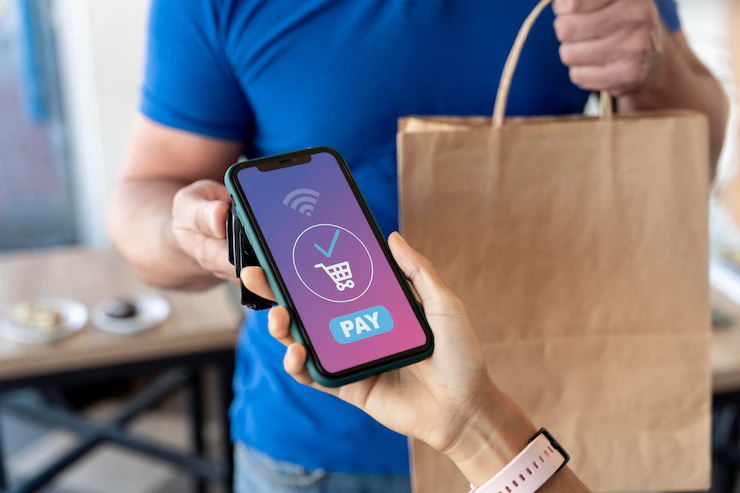Table Of Contents
How Did Payment Solutions Change Over The Last 50 Years?
Last Updated on: November 7th, 2024
The payment solutions industry has come a long way over the last fifty years. In the early days, most people paid with cash or checks.
Credit and debit cards were starting to become popular, but they weren’t yet mainstream. Today, dozens of different payment options are available, and consumers have more choices than ever before. Let’s look at how payment solutions have evolved over the last five decades.
The Payment Solutions Over The Last 50 Years?">The Payment Solutions Over The Last 50 Years?

The CVV number was created in the 1970s. The CVV number is the three-digit code on the back of a credit card that is used to verify the cardholder’s identity.
This number is typically printed on the signature strip on the back of the card and is used as a security measure when making online or telephone purchases.
In the 1990s, the payment landscape was very different from today. Checks were still the most popular form of payment, followed by cash and credit cards, debit cards were not yet widely available, and online payments were virtually nonexistent. It started to change in the late 1990s as new technologies emerged.
The most significant changes came with debit cards. These cards allowed consumers to directly access their bank accounts to make purchases without carrying cash or checks. It quickly became a popular option, as it was more convenient than other payment methods.
Another significant change came with the rise of online shopping. In the early days of e-commerce, most people used credit cards to pay for their purchases. However, this changed in the early 2000s with new payment options like PayPal. It allowed consumers to pay for online purchases without using a credit card.
Today, there are dozens of different payment options available. Credit and debit cards are still widely used, but there are also many alternatives such as mobile payments, cryptocurrency, virtual wallets, and many others. Consumers have more choices regarding how they want to pay for their purchases.
The payment landscape has changed dramatically over the last fifty years. What started as a few simple options have evolved into a complex ecosystem with many different choices.
The Future Of Payment Solutions?">The Future Of Payment Solutions?
The future of payment solutions is challenging to predict, as new technologies and trends are constantly emerging. There are a few things that we can be reasonably sure about.
One of the most likely trends is the continued growth of mobile payments. The convenience and flexibility of mobile payments are already proving popular with consumers. We may also see more businesses accepting cryptocurrency as payment as this technology becomes more mainstream.
Another trend likely to continue is the move away from traditional payment methods such as cash and checks. This shift has been happening for many years now and is only accelerating as new payment options become available.
In the future, we may see even more alternative payment options, such as biometric payments (using fingerprints or iris scanning) and blockchain-based solutions.
The future of payment solutions is challenging to predict; however, we can be reasonably sure that the trend towards alternative payment methods will continue. We may also see more businesses accepting mobile payments and cryptocurrency as these technologies become more mainstream. As the world moves away from traditional payment methods, we will likely see even more innovation in the years to come.
The Benefits Of Payment Solutions">The Benefits Of Payment Solutions

The benefits have been well documented over the last 20 years. Some of the primary benefits include:
- Convenience: Payment solutions are convenient for both consumers and businesses. Consumers can make purchases without cash or checks, and businesses can accept payments without processing paper payments.
- Safety: Payment solutions are typically much safer than traditional methods such as cash or checks. They often contain fraud protection features, such as chargebacks and dispute resolution processes.
- Efficiency: Payment solutions can help businesses run more efficiently by reducing the time and resources needed to process payments. It can free up staff to focus on other tasks and save businesses money on transaction fees.
The payment landscape has changed dramatically over the last twenty years, and the benefits of payment solutions have been well documented.
These solutions are convenient, safe, and efficient, making them increasingly popular with businesses and consumers. As the world moves away from traditional payment methods, payment solutions will likely become even more commonplace in the years to come.
What Are The Risks Of Modern Payment Solutions?">What Are The Risks Of Modern Payment Solutions?
While there are many benefits to the new payment solutions, there are also some risks that businesses should be aware of.
One of the most significant risks is fraud. With traditional methods such as cash and checks, detecting and preventing fraud can be challenging. However, payment solutions often have built-in fraud protection features, such as chargebacks and dispute resolution processes. It can help businesses avoid losses due to fraudulent activity.
Another risk to consider is the possibility of technical problems. If a business’s payment system goes down, it could lose sales or even face legal penalties. It is why it’s crucial to choose a reliable payment provider and to have a backup plan in case of technical difficulties.
Finally, businesses should be aware that payment solutions are constantly evolving. It means they need to stay up-to-date on the latest changes and updates to avoid disruptions to their service.
Businesses aware of the potential risks can take steps to mitigate them, such as choosing a reliable payment provider and having a backup plan in place. Overall, the new payment solutions offer many advantages that businesses should take advantage of.
Read Also:














